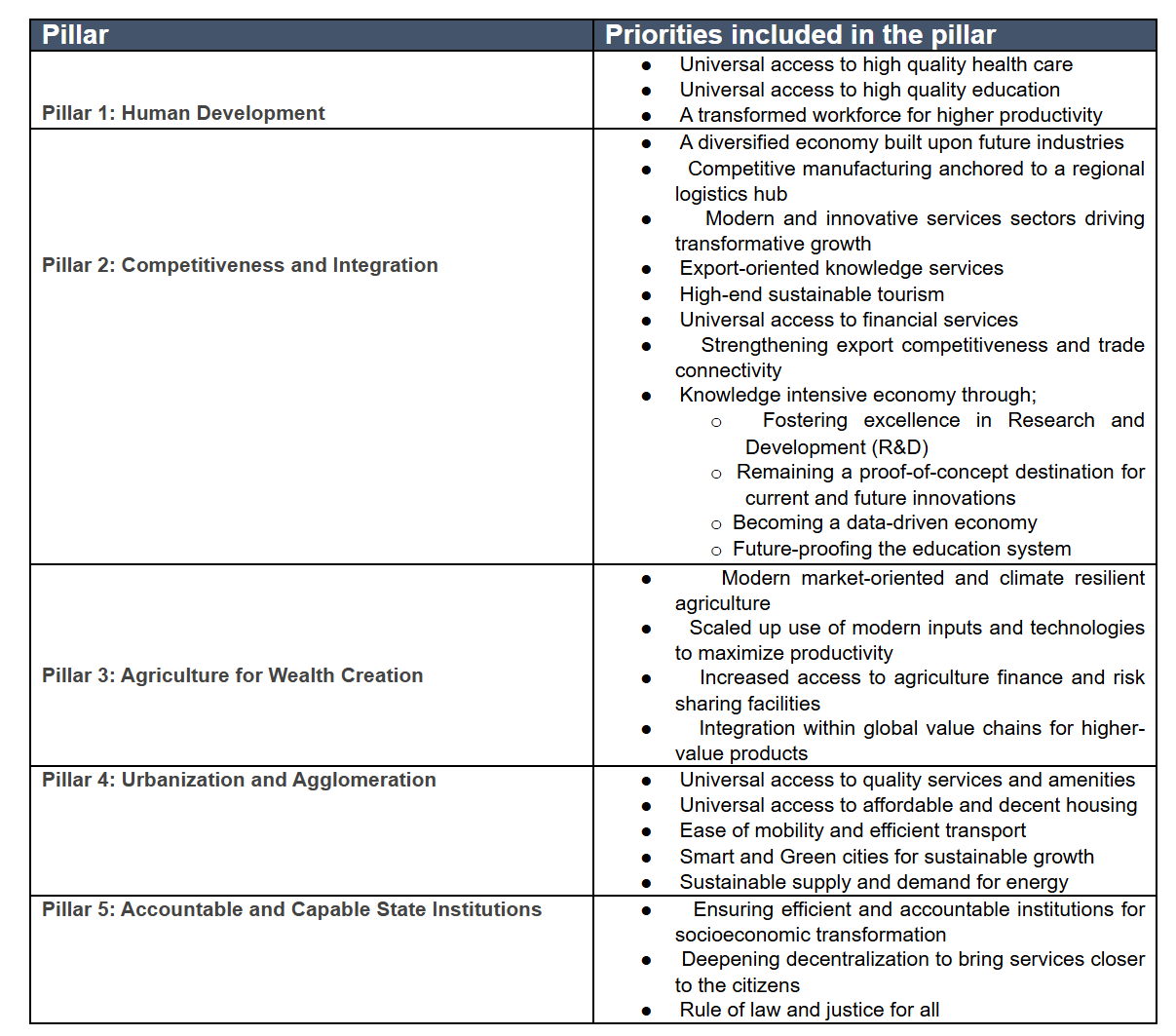Nationwide Strategies (VISION 2050 and NST)
Vision 2050
Rwanda's Vision 2050 outlines the Country's long-term development goals and aspirations by the year 2050. Vision 2050 serves as a strategic framework to guide Rwanda's socio economic transformation over the coming decades. It is part of Rwanda's broader development planning initiatives, building upon earlier strategic frameworks like the Vision 2020.
Since the beginning of the 21st century, the Rwandan Government has consistently pursued a vision of transitioning into a knowledge-based economy, initially outlined in Vision 2020 with the objective of elevating Rwanda into a middle-income status. This Vision has been seamlessly carried forward into the forward-thinking Vision 2050. In the short term, Vision 2050 emphasises the promotion of macroeconomic stability and wealth creation to reduce reliance on foreign aid. By the medium term (2035), the focus shifts to transforming Rwanda from an agrarian economy to a knowledge-based one, aiming for upper-middle-income status. The long-term goal (2050) involves creating a robust middle class and fostering entrepreneurship, with success measured by attaining developed-Country status and a high development index.
Central to Rwanda's development and transformation agenda is Information and Communication Technology (ICT). Positioned as a pivotal cross-cutting enabler, the ICT sector plays a crucial role in achieving national goals outlined in the Vision 2050.
The Vision is pursuing 2 main goals around which all the stakeholders will be mobilised.
The first objective is the Economic Growth and Prosperity for Rwandans:
Generating wealth for all Rwandans is the essence of economic prosperity, necessitating sustained and robust long-term economic growth. This involves ensuring regional and global competitiveness, continual enhancement of productivity, and the creation of quality employment opportunities through strategic investments in both economic and human capital. Rwanda's aspirations are articulated in the goal of achieving upper-middle-income Country (UMIC) status by 2035 and progressing to high-income Country (HIC) status by 2050. To realise these ambitions, specific economic targets include attaining a GDP per capita surpassing USD 4,036 by 2035 and exceeding USD 12,476 by 2050.
The second main objective is to achieve High Quality and Standards of Life for Rwandans
Ensuring an elevated quality of life for Rwandans involves broadening societal participation in national development. This includes augmenting investments in human capital and guaranteeing universal access to essential services, safety, and security. The objective is not only to empower youth, women, men, and the elderly to actively contribute to sustainable development but also to ensure that no one is excluded from the benefits of progress. This commitment aligns not only with Rwanda's principles of good governance but also with the positive values driving societal transformation.
The Rwanda Vision 2050 is built on 5 pillars:
 Figure: Pillars of the Vision 2050
Figure: Pillars of the Vision 2050
The detailed version of the Vision 2050 is available on the MINECOFIN website for consideration.
Rwanda's policy aspirations are translated into action through successive seven-year National Strategies for Transformation (NST1 and the ongoing NST2), supported by detailed sectoral strategies designed to attain the objectives of the Sustainable Development Goals (SDGs).
NST- 1 & NST-2
The "National Strategy for Transformation (NST 1)" in Rwanda is a 7 years Government Program that refers to the Country's overarching development plan. NST 1 is designed to guide Rwanda's economic, social, and political transformation over 2017-2024.
NST 1 is part of the Rwanda 2050 Vision which aspires to take Rwanda to high living standards by the middle of the 21st century and high-quality livelihoods.
NST-1 has 3 domains of priorities: Economic transformation, social transformation, and transformational Governance. Each domain has specific measurable goals and activities.
As NST-1 will end up this year 2024, the Government of Rwanda is currently working on NST-2 and the release of the Strategy before the end of the year 2024.

No Comments